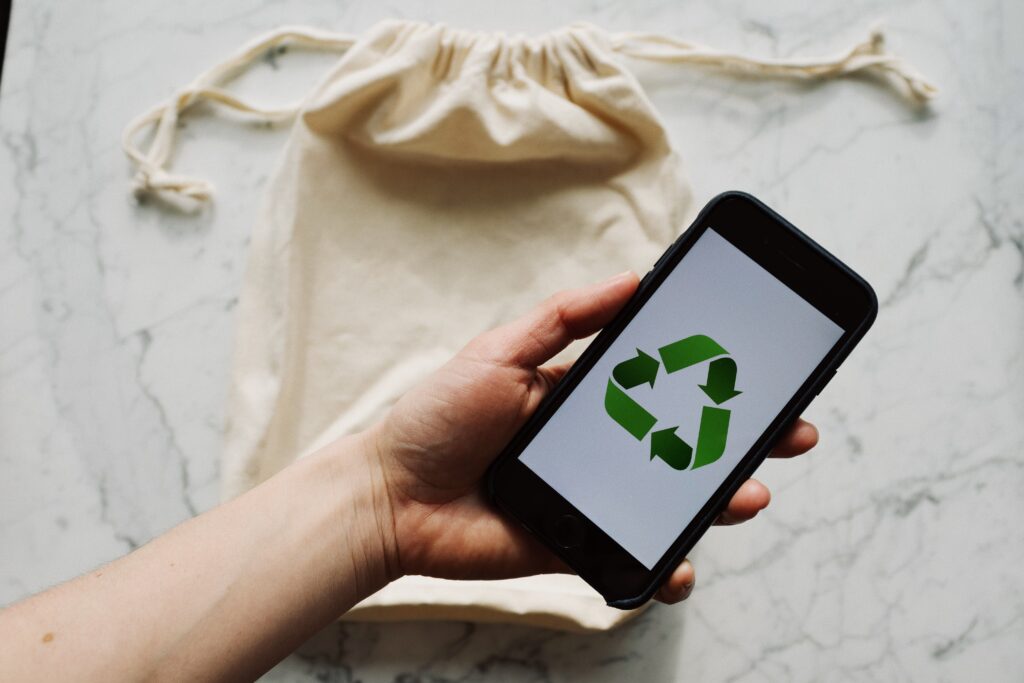
In our increasingly tech-driven world, electronic devices have become indispensable. At Hop-A-Long I.T., we understand the importance of having the proper devices in the correct positions in your business! However, the rapid pace of upgrades raises a crucial question: What becomes of the old gadgets? Accumulating in drawers and closets, these outdated devices pose a challenge, necessitating responsible disposal to prevent environmental harm. E-waste can contain hazardous materials like lead and mercury, making proper disposal essential for the health of your local community and the world.
E-waste is a term that refers to electronic devices that are no longer useful or wanted. These include things like:
- Computers
- Laptops
- Smartphones
- Tablets
- Printers
- Cameras
- TVs
- and more
Understanding E-Waste Composition
To tackle the issue of e-waste effectively, it is essential to recognize its components, including old computers, smartphones, printers, batteries, chargers, and cables. Lack of awareness often leads to improper disposal.
E-waste comprises about 70% of toxic waste. People only recycle 12.5% of it.
1. Reduce Your E-Waste
Mitigate the environmental impact by reducing the generation of e-waste. Make mindful purchasing decisions, opting for durable and energy-efficient products. Consider repairing devices to extend their lifespan. Before acquiring a new electronic device, evaluate its necessity—can it be shared among multiple users?
Do you need assistance upgrading a device, or fixing it? Give us a call! (785) 877-7001
2. Explore Recycling Programs
Numerous electronics retailers and manufacturers offer convenient recycling programs. Investigate local options, including well-known initiatives such as Best Buy and Staples, which collect old gadgets to ensure eco-friendly disposal.
Here are a couple you can check out:
3. Use E-Waste Recycling Centers
Specialized e-waste recycling centers dismantle electronic devices safely, recycling valuable components and disposing of hazardous materials responsibly.
Here are a few sites where you can find recycling centers:
4. Consider Donating or Selling Functioning Devices
For still-functional devices, consider donating to charities or schools or selling them through reputable online platforms. Properly clean data from old devices to ensure data security.
5. Dispose of Batteries Separately
Batteries, especially rechargeable ones, require separate disposal due to their hazardous nature. Many retailers and recycling centers provide dedicated bins for battery disposal.
6. Try Manufacturer Take-Back Programs
Inquire about take-back programs from electronic manufacturers when acquiring new devices. Some manufacturers accept old gadgets for responsible recycling or refurbishment.
7. Opt for Certified E-Waste Recyclers
Choose certified recyclers, marked by certifications like R2 or e-Stewards, to ensure adherence to high environmental standards and data security protocols.
8. Educate Your Office or Household
Raise awareness about responsible e-waste disposal within your office or household. Encourage participation and adherence to proper disposal methods.
9. Repurpose or Upcycle
Embrace creativity by repurposing or upcycling old electronics. Transform an old computer monitor into a digital photo frame or use smartphone parts for DIY projects, reducing waste and fostering innovation.
10. Encourage Manufacturer Responsibility
Support companies committed to environmental responsibility and responsible e-waste management. Choose products from manufacturers practicing sustainable practices.
Secure Data Before Disposal, Sale, or Donation
Before parting with your devices, prioritize data security. Wipe all data using reliable erasure software or consult with an IT professional to ensure secure removal. Cybercriminals often target dumped electronics, making data security crucial even in disposal.
Get Help Backing Up & Cleaning Devices
For expert data migration and thorough data cleaning, enlist the assistance of Hop-A-Long I.T. Our services ensure a seamless transition from old devices to new ones. Call us today to schedule a consultation and contribute to a sustainable tech future for Kansas and Nebraska!
Adapted with permission from The Technology Press.
